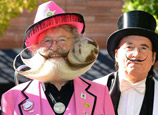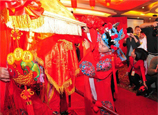
Amid complaints that China's excessively exam-oriented education system does anything but cultivate students through independent thinking and integrated development, such schools have, to some extent, become parents' first choice for their children's education. "While we can't change the current education system, at least I can choose to give my daughter an environment in which she can just be a happy girl and won't have opinions from the adult world imposed on her," Cai Xueyi, a young mother of a 2-year-old daughter, told the Global Times.
"Compared with China's traditional pre-school education, a Montessori education gives kids more freedom in their exploration of this world in their own way, and most importantly, shows enough respect to the kids by responding to their needs," said Zhou Yuan, a mom who recently sent her 3-and-a-half-year-old son to the Little Oak Children's House in Beijing, which bases its education on the Montessori method.
Adapting to reality
However, after nearly 10 years' development, though very popular in small circles, especially highly educated people, kindergartens like Ba Xueyuan and Little Oak are still a minority in China's pre-school education system. In addition to its comparatively high tuition fees, due to the greater investment in teacher training and wider variety of teaching materials, doubts remain among many parents, who worry that the laissez-faire approach and lack of systematic learning might leave their children at a disadvantage when they enter primary school.
"It would be hard for a kid whose freedom to explore the world was encouraged in kindergarten to get used to the mainstream primary education in China, which puts a great emphasis on discipline and self-restraint," said Tu Shuo, a young mother from Nanchang city, Jiangxi Province, who finally decided to send her daughter to a mainstream kindergarten focused on cultivating children's reading and expression abilities.
In response to these doubts, several modifications have been made to these non-mainstream kindergartens, who all agree that it's hard to simply apply Montessori or Waldorf methods to children in China, as their living environment is totally different from that in Italy or Germany.
At Little Oak, children aged 5 and 6 are required to learn a maximum of 500 Chinese characters and basic math computing in the last year of their kindergarten life. "We have to make such preparations for our kids, as the education in primary schools in China is based on an assumption that these kids have already learned part of their primary school courses in kindergarten. When there is nothing to change, we have to try our best to adapt to the situation," said a teacher at Little Oak surnamed Gu.
At Ba Xueyuan, a class simulating a primary school environment has also been set up, with the aim of helping students to transition from learning through behavior to learning through thinking.


















 Heavy snowstorm wreaks havoc in NE China
Heavy snowstorm wreaks havoc in NE China


![]()
